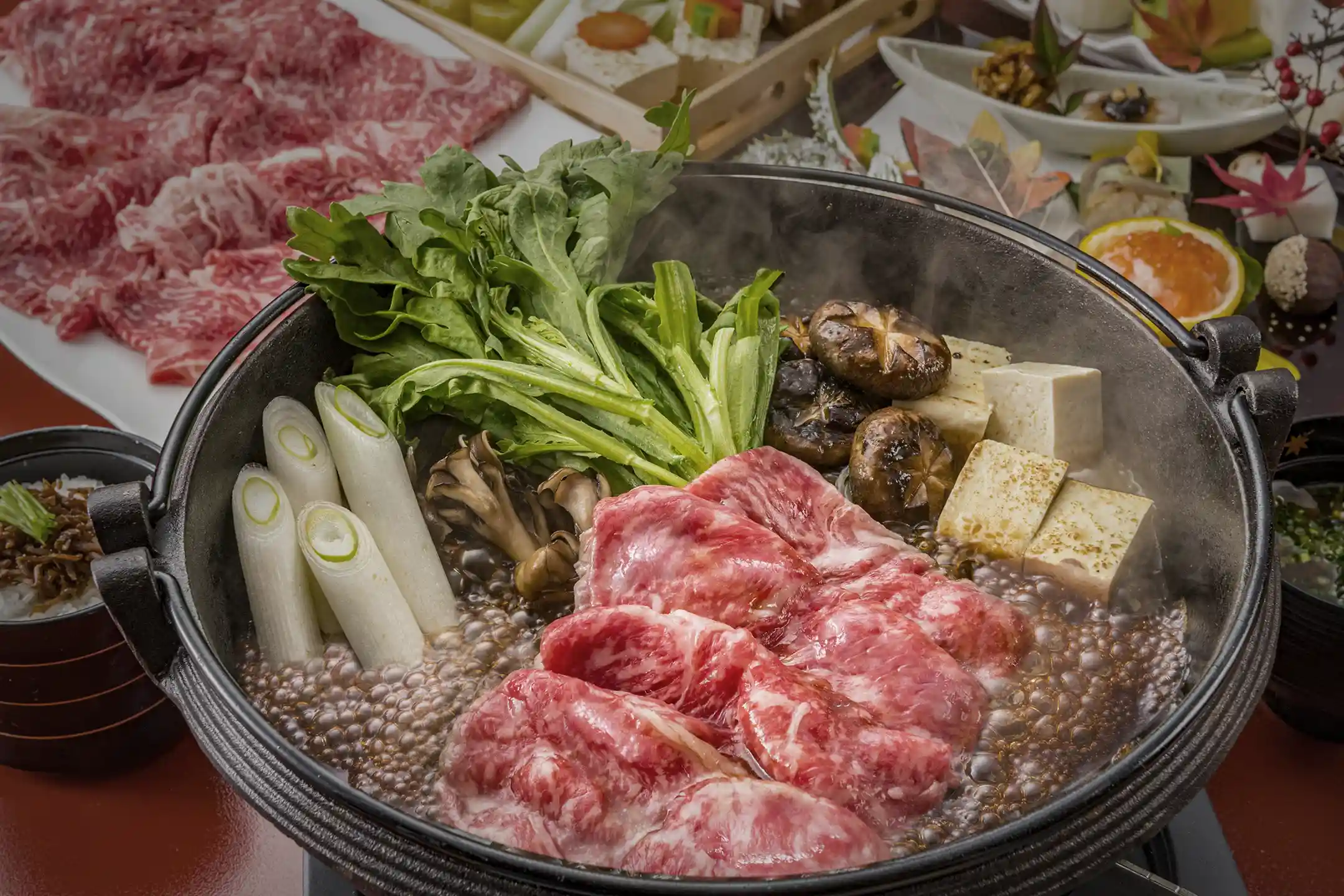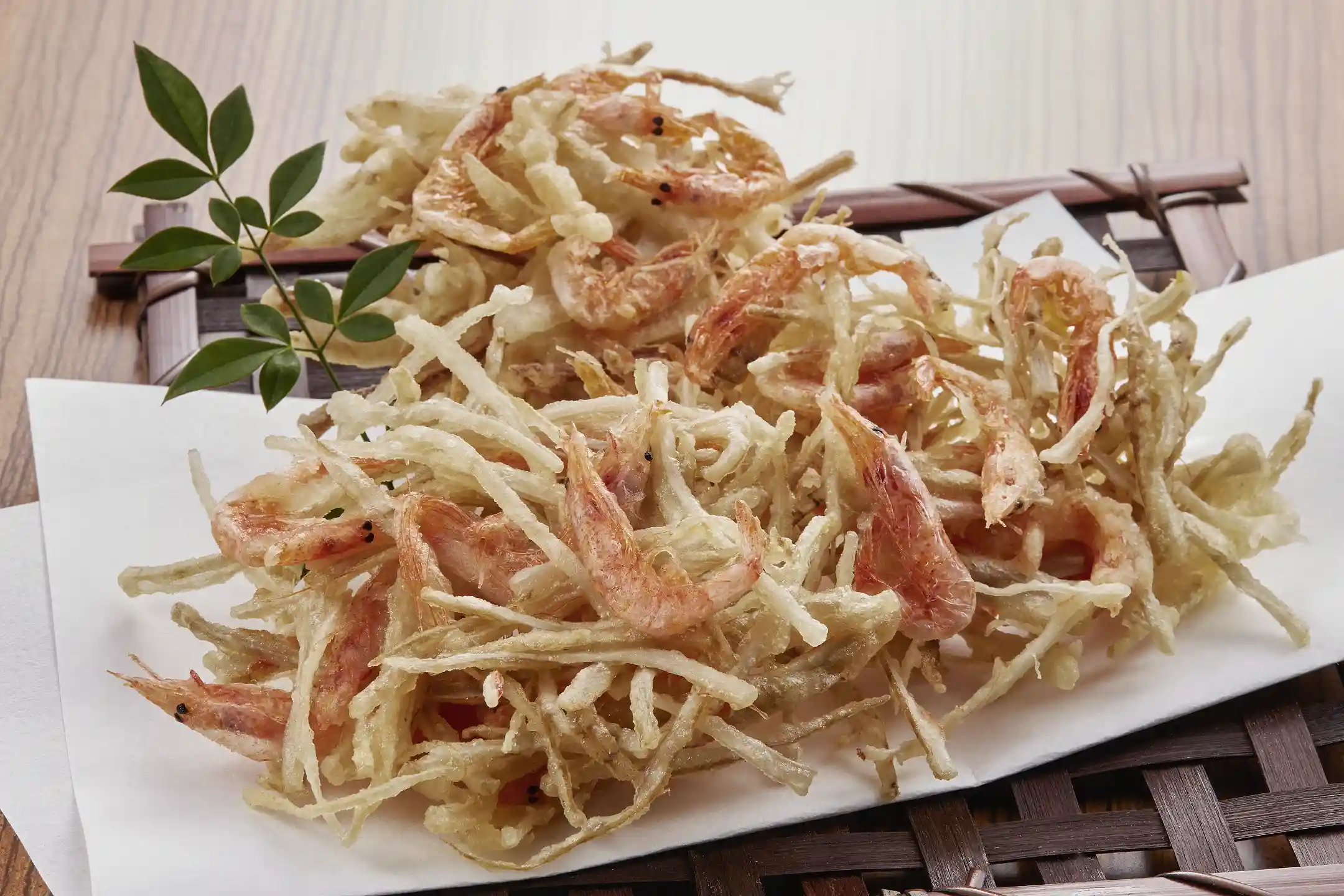Ikebana is a traditional Japanese art form; the word literally means “bringing living flowers to life,” essentially breathing new life into cut blossoms. It’s not just flower decoration; rather, it’s a cultural practice of arranging flora to create harmony in a space. To someone new, ikebana may seem mysterious or enchanting, but behind its mystique lies a profound philosophy and reverence for nature that anyone—including you—can appreciate. Its charm rests on centuries of aesthetic refinement and philosophical depth, which is why it continues to captivate people today.
In this article, you’ll explore ikebana’s history, the distinct Japanese perspectives on nature and aesthetics it embodies, and its impact on modern spatial design from multiple viewpoints. By examining it through these cultural lenses, your understanding and appreciation of this traditional art form will deepen.
The Origins and Aesthetic Roots of Ikebana
To understand what ikebana truly means in Japanese, it’s helpful to look at its history and the aesthetics behind it. The practice traces back to around the 6th century, when Buddhism arrived in Japan and flowers began being offered at Buddhist altars. Back then, flowers weren’t just decorations—they were offerings integral to religious devotion. Even earlier, Shinto tradition involved decorating evergreen trees as yorishiro (sacred objects for deities)(*1).
Building on this religious heritage, ikebana was refined during the Muromachi period by a monk named Senkō at Kyoto’s Rokkaku-dō, culminating in the formal “Rikka” style. It was around this time that ikebana became established as an art called kadō—the “way of flowers”—a spiritual discipline in which practitioners master the path of floral artistry(*2).
Originally cultivated by court nobles and samurai, ikebana gradually spread to townspeople and women. By the Edo period, it had become firmly rooted across Japan as a beloved element of everyday life.
Over time, ikebana developed a uniquely Japanese worldview and aesthetic. A prime example is the concept of wabi-sabi and the appreciation of empty space. In these philosophies, charm is found in modesty rather than flamboyance, and even blank space is regarded as beautiful. A single flower can be utterly beautiful if it harmonizes with its surroundings—that’s the essence of ikebana. By deliberately avoiding over-decoration and leaving imperfections or empty space, practitioners make the flower’s beauty stand out even more(*3).
The result is a quiet, refined sensibility that is distinctly Japanese. Unlike the Western preference for large, flashy bouquets, ikebana emphasizes serene harmony with nature. Branches and blossoms arranged in a vase mirror the passing seasons and life’s fragility, imparting a profound sense of lingering emotion (yōjō) to anyone who sees them..webp?width=750&height=500&name=Ikebana_DSC_9620_(13032379373).webp)
Major Schools of Ikebana and Their Styles
Over its long history, ikebana has branched into numerous schools (or styles), each with its own unique aesthetics and techniques. While it might look like a single tradition from the outside, in reality there is a rich diversity from classical forms to modern interpretations. Among these, three major schools—Ikebō, Ohara-ryu, and Sōgetsu-ryu—are especially famous. Understanding their differences will help you appreciate the depth and variety of ikebana culture. Let’s explore the features of these representative schools and the philosophies behind them.
Ikebō, Ohara-ryu, and Sōgetsu-ryu: Differences and Charms
First, the Ikebō school is the oldest, with a history of over 550 years dating back to Kyoto’s Rokkaku-dō (the birthplace of ikebana). It has a dignified style rooted in tradition and places great importance on highlighting the natural beauty of its plant materials. Even within its strict forms, a deep respect for the life present in each season shines through(*1).
Next, Sōgetsu-ryu is a relatively new school, founded in 1927 by Sōfū Teshigahara. It did not adhere strictly to traditional forms; instead, it embraced the idea that “the person arranging is more important than the flower itself,” valuing the arranger’s creativity. Under this philosophy, it pursued a free-spirited, avant-garde form of expression(*2).
Sōgetsu-ryu is known for using not only plants but also wood, metal, stone, plastic, and other materials in its arrangements. The bold creations step beyond classic flower arranging into the realm of modern art, earning high praise both in Japan and abroad(*2).

Finally, Ohara-ryu was founded in 1895 by Unshin Ohara. It blends the traditional techniques learned from Ikebō with the colorful sensibilities of Western flowers. Ohara-ryu is particularly famous for inventing the Moribana style (mounded flowers), in which blossoms are arranged in a shallow dish(*3).
This school creates many pictorial works that resemble snapshots of natural landscapes, as well as modern-style arrangements suited to Western interiors. By blending tradition with bright, vibrant colors, Ohara-ryu’s designs feel more approachable and are easier for beginners to try, which adds to its charm(*3).
The Founders Behind Each School
The features of these schools reflect the personal philosophies of their founders. In the Ikebō school, for example, there is a teaching to “use even withered branches to mirror nature’s true form.” This reflects a deep aesthetic that honors every part of a plant’s life—including branches as they begin to wither(*4).
Unshin Ohara, the founder of Ohara-ryu, was originally a sculptor. Drawing on his artistic sensibility, he devised the “Moribana” style—arranging Western flowers in shallow containers(*5). This innovative concept laid the foundation for modern ikebana, creating a harmonious blend of tradition and novelty.
Teshigahara Sōfū, the founder of Sōgetsu-ryu, was a rebel who questioned traditional ikebana forms. He broke away from his father (also a flower master) to forge his own path. He famously said, “It is not that man arranges flowers, but that flowers arrange man,” emphasizing that expressing and refining oneself through flowers is essential(*6). This perspective was bold—seeing ikebana not just as decoration but as an art that reflects the inner self. Thanks to Teshigahara’s innovative spirit, Sōgetsu-ryu succeeded in freeing ikebana from traditional constraints and elevating it to the level of contemporary art.
Ikebana as an Art of Space and Design
Ikebana is an art that looks beyond the flowers themselves to the entire space they inhabit. The lines of the stems and blossoms, the shadows they cast, and even the empty space all become part of the design, creating a unique rhythm and harmony in a room. In other words, a single ikebana arrangement can shape the entire atmosphere of a space. In the following sections, we’ll explore the beauty and psychological effects that ikebana brings to a space, and how it merges with modern architecture and interior design.

The Beauty and Psychological Impact of Ikebana Arrangements
Ikebana has the power to completely change the mood of a space with just one arrangement. For example, placing a single flower in the alcove (tokonoma) of a simple tatami room brings seasonal color and a subtle tension to the otherwise minimalist space—something that has delighted guests’ eyes for centuries.
In a modern living room or office, even a single ikebana arrangement can make a sterile room feel alive and bring a sense of calm to those in it. For example, a study by Japan’s National Agriculture and Food Research Organization (NARO) confirmed that simply looking at flowers lowered people’s blood pressure and stress hormones and eased negative emotions(*1). In other words, the natural colors and shapes of flowers have a relaxing, healing effect on our eyes and minds, calming busy, modern lives like yours.
Ikebana is also a powerful tool in interior design. You can shape a room’s entire impression by what flowers you put and where. For example, placing a tall, dramatic ikebana piece in a hotel lobby instantly creates a glamorous, luxurious atmosphere. Conversely, placing a small single-flower vase in a quiet corner lends a restrained, tranquil charm.
This clearly demonstrates how ikebana can function as artful interior decor, coloring an entire space. Additionally, having ikebana in your room lets you feel the changes of the seasons and often creates moments of spontaneous relaxation—another great charm of this art form.
Ikebana in Contemporary Architecture and Interiors
You’ll find ikebana’s essence not only in traditional Japanese settings but also alive in modern architecture and interior design. In high-end hotel and ryokan lobbies, elaborate seasonal ikebana installations welcome guests. The Sōgetsu Kaikan in Akasaka—designed by prominent architects—features a contemporary atrium where ikebana is showcased as floral art.
Moreover, collaborations between ikebana and modern art are gaining attention in international museums and contemporary art circles. Sōfū Teshigahara was even called “the Picasso of flowers” in the West; he was a sculptor and painter who took the concept of ikebana into sculptural form. In recent years, Sōgetsu artists have unveiled large-scale ikebana installations in New York and Paris, and ikebana has evolved into a truly global form of art.
Its blend of tradition and innovation creates a striking presence in modern architecture and interiors, demonstrating the depth of Japanese culture to the world.

Ikebana Workshops in Japan
For travelers like you, trying Japanese ikebana firsthand is an excellent way to experience the depth of Japanese culture. Workshops in Kyoto (the ancient capital where tradition thrives) and in Tokyo (a bustling metropolis of diverse cultures) are especially popular, offering a variety of engaging program experiences. Whether you are deeply interested in traditional culture or just a beginner who wants to enjoy Japan’s flower culture in a relaxed way, you’ll find ikebana experiences across Japan to match your needs.
In Kyoto—the birthplace of ikebana—you’ll find many high-quality ikebana experience programs. For instance, one workshop held in a traditional townhouse near Nijo Castle lets you receive instruction from an esteemed Ikebō teacher while you arrange your own piece using seasonal flowers. You’ll often use local seasonal plants too—like cherry branches or autumn leaves—which adds to the charm. Even if traditional culture feels intimidating, you’ll likely find yourself enjoying a heartwarming experience in a friendly, relaxed setting(*1).
You’ll enjoy the authentic hospitality unique to Ikebō (the school headquartered at Rokkaku-dō) and the luxurious experience of arranging flowers in a historic Japanese space. For visitors from around the world, this is sure to become an unforgettable memory.
In Tokyo—the sprawling metropolis—you’ll also find a variety of ikebana workshops. Each of the three major schools has a dedicated facility (Ikebō Tokyo Kaikan, Sōgetsu Kaikan, and Ohara-ryu Kaikan) offering everything from casual one-day classes for beginners to full-term courses(*2). For example, the Sōgetsu Kaikan in Akasaka offers English-supported classes, so you don’t have to worry about language when you learn ikebana.
There are also private lessons led by young artists where you can learn a stylish form of ikebana with a modern art twist, enjoying the practice in a free, creative atmosphere. Another appeal of Tokyo’s workshops is their accessibility and multilingual support.
Sustainable Ikebana Experiences in Eco-Friendly Settings
In recent years, there’s been a trend to incorporate environmental awareness into ikebana experiences. Ikebana has always been a tradition that finds beauty in using very few materials and avoiding waste. In traditional schools, the philosophy of treating even one small branch or a bent stem as part of the plant’s character has been carefully passed down. This is literally the spirit of “mottainai” (not wanting to waste anything): for example, even a wilting flower isn’t thrown out but is turned into a dried flower(*3). More recently, some initiatives use locally grown, organic flower materials to reduce floral waste(*3). In an age when people are more environmentally conscious, ikebana’s approach resonates with many, beyond just the cultural aspect.
You can also enjoy ikebana experiences at eco-conscious locations. Programs held at hotels with lush gardens or at traditional temples let the very environment add a sustainable vibe, giving you an even deeper sense of relaxation. For example, in Kyoto there are unique experiences like combining early-morning zazen meditation with an ikebana session in an ancient temple, or workshops in a nature park where you use plants you gather on the spot. Through ikebana, you touch on the heart of Japanese culture—“respecting and cherishing nature.” This isn’t just a uniquely Japanese experience; it also encourages reflection on a sustainable future.
Ikebana at Home: Basic Tips for Beginners
If you're worried that ikebana looks hard, don’t be. Once you learn the basics, anyone can get started. All you need are three tools: a kenzan (flower frog), a vase, and pruning shears. Then simply buy a few seasonal flowers from a florist or market—a handful is enough(*1). To begin, set the kenzan in the vase and fill it with water. A basic rule is to use three stems of varying heights to create a balanced triangle. Place the tallest main flower first, then a supporting flower about 70% of that height, and finally a shorter accent flower. Even as a beginner, following this “Shin, Soe, Hikae” (main, secondary, complementary) principle will yield a beautiful arrangement. Tip: cut each stem at a diagonal before placing it, which improves water absorption and helps the flowers last longer(*1).
Another style beginners might try is “Nageire,” where you simply toss the flowers into the vase without a fixed pattern. You don’t even need a kenzan for this—just intertwine the stems so they support each other, and you’ll enjoy a free, natural expression.
For color combinations, try pairing contrasting or complementary hues. For example, a red flower with green or white foliage creates a crisp, balanced look, while grouping soft pastel tones together produces a gentle, soothing effect. Start simple—perhaps one type of flower with a few branches—and once you feel comfortable, experiment with mixing different flowers and grasses. After you finish your arrangement, place it in a spot you love in your home. Even a single flower in your space can instantly brighten the atmosphere and bring a touch of seasonal color to your life.
Making Ikebana a Mindful Habit

If you make ikebana a regular habit, you’ll notice many positive changes in your life and mind. Those quiet moments spent arranging flowers are like a mini meditation that resets the mind in the middle of a hectic day. In fact, people who practice ikebana regularly report a boost in concentration and a reduction in stress(*2). Working with flowers naturally clears away distractions and calms your mind, much like mindfulness practice today.
Also, having fresh flowers regularly in your home will automatically lift your spirits. It gives you a sense of accomplishment and may even inspire you to keep your space tidier. Having flowers around also brings a sense of calm to the people around you—family, friends, and others who share your space.
In this way, making ikebana a habit improves your quality of life far beyond a hobby. Those quiet moments tending flowers are times when you listen to yourself, and with a calm mind, you’re likely to approach each day with a more positive outlook(*2). Why not start with just one flower? You’ll probably find that it brings little moments of happiness and discovery into your everyday routine.
In Conclusion
In conclusion, Japanese ikebana is built on the spirit of “bringing living flowers to life,” celebrating life’s impermanence and harmony with nature. It has evolved as the way of flowers (kadō) since the Muromachi period and today continues to explore new expressions while honoring tradition.
Philosophies like wabi-sabi and the appreciation of empty space have elevated ikebana from mere decoration to an art of spiritual enrichment. By focusing on harmony within a space, ikebana has deeply integrated into modern interior design and architecture and is gaining recognition around the world. Moreover, incorporating ikebana into your daily life is known to bring peace of mind and mindfulness.
Workshops—from beginner to advanced—are held all over Japan, so why not join one and experience this beautiful traditional Japanese culture for yourself?
Author Bio

Maoko Shibuya
Content Planner & Writer Holding a master’s in Digital Marketing and experience across global markets, Maoko blends international perspective with a deep appreciation for Japan’s cultural heritage. She plans and writes compelling narratives that reveal the country’s beauty and depth, drawing on her passion for travel, local cuisine, and cultural exploration.




/Kazunoko%20Matsumae-zuke%20(Herring%20Roe%20and%20Seafood%20Pickles).webp)